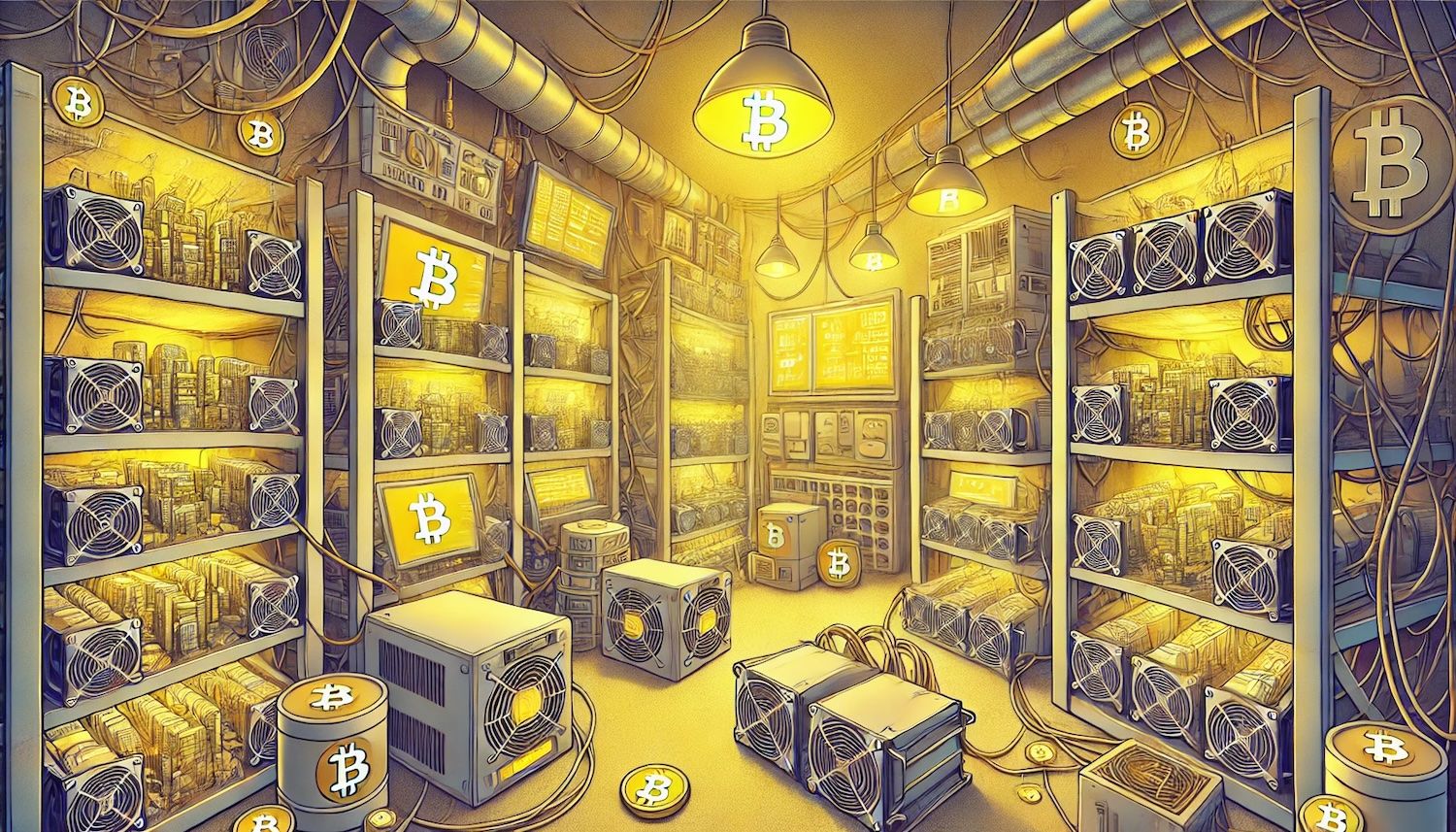Mining is an essential part of Bitcoin world. But we all know Bitcoin is a finite resource, so one day mining is going to end. What happens then? Who will carry out BTC transactions and how will these services be paid for? And is the Bitcoin world possible without mining altogether?
Let’s find out.
Since its inception in 2009 by the mysterious Satoshi Nakamoto, the pioneering cryptocurrency known as Bitcoin has been defined by its limited supply.
One of the main selling points of Bitcoin is its intrinsic scarcity, which is limited to 21 million coins. With nearly 19.886 million bitcoins mined as of July 2025 (94.7% of the total), there will likely be another 1.1 million found in the years to come. There have been heated debates regarding the network's future since the supply of newly mined bitcoins has been steadily declining.
Mining the last bitcoin is expected to take place sometime around 2140 according to the current block reward schedules and the halving events that decrease the issuance rate over time. The consequences of reaching the maximum supply are significant and necessitate investigation today, even though this date appears far off.
But we also know that somewhere in 2030s the speed of mining will get so slow that mining will become almost insignificant.
Everyone from investors to miners to users is wondering how the Bitcoin network will stay alive without the motivation of new coin rewards and what this implies for the utility and value of the cryptocurrency.
Bitcoin stands in stark contrast to conventional fiat currencies that are vulnerable to inflationary pressures exerted by central banks because its design guarantees that the rate of coin creation slows down over time. One reason Bitcoin has become so popular as "digital gold" is because of its deflationary model. On the other hand, it brings up important concerns: How will the people who keep the network running, known as miners, be paid? Can the network be kept secure with just transaction fees? How will this affect the value of Bitcoin and its place in the international monetary system?

The Anatomy of Bitcoin: Understanding the 21 Million Cap
Why Only 21 Million Bitcoins?
Satoshi Nakamoto intentionally created digital scarcity by limiting Bitcoin to 21 million coins.
Nakamoto hoped that by including this limit in the protocol, it would be like gold and other precious commodities: limited in supply. As a result of its intrinsic scarcity, Bitcoin is able to withstand inflation and retain its value.
The consensus rules of the network make the limit practically unchangeable unless the majority of participants agree.
Changing the 21 million limit would require the highly improbable consensus of the Bitcoin network's decentralized nodes and miners.
Attempts to alter this core parameter would almost certainly cause a hard fork, which would divide the network and damage confidence among users and investors. No one entity can unilaterally make such significant changes with Bitcoin because of its decentralized nature. This keeps the system intact.
Mining, Transaction Processing and Miner Rewards Explained
Bitcoin transactions are validated and added to the blockchain ledger, and new bitcoins are introduced into circulation through the mining process. Miners compete to discover a nonce—a number used once—that meets the network's difficulty requirement by solving complex mathematical problems using powerful computers.
The miner who finds the solution and validates the block first gets bitcoins as a reward, and they broadcast their solution to the network.
Bitcoin network security relies heavily on miners. Their validation and addition of transactions to the blockchain stops fraudulent activities like double spending. Miners get two forms of payment for their efforts: the block subsidy, which is new bitcoins, and the transaction fees paid by users.
The main source of income for miners is the block subsidy, which, due to halving events, decreases over time.
Nodes are the central processing units (CPUs) that run the Bitcoin network's software, which verifies transactions and updates the blockchain ledger. Full nodes are responsible for storing the complete blockchain and validating all blocks and transactions. There are other kinds of nodes as well. The decentralization and attack resistance of the network are ensured by the communication between nodes, which propagates blocks and transactions.
Mining Complexity and Difficulty Adjustment
Every 2,016 blocks, or around every two weeks, the Bitcoin network changes the mining difficulty so that each block takes 10 minutes on average.
It becomes more difficult to discover new blocks if miners add them too rapidly with increased hash power. The challenge increases as the number of blocks added decreases. The constant supply of new bitcoins and the integrity of the network are guaranteed by this self-regulating mechanism.
The Halving Events
Bitcoin's halving events occur every 210,000 blocks, roughly every four years, reducing the block subsidy by half.
The initial reward was 50 bitcoins per block in 2009. The first halving in 2012 reduced it to 25, the second in 2016 to 12.5, the third in May 2020 to 6.25 bitcoins per block, and that fourth April 2024 lowered the reward to 3.125 bitcoins.
Halvings are integral to Bitcoin's deflationary model, decreasing the supply rate and often influencing market dynamics.
What will happen in 2030s?
There is a point in the 2030s when the issuance of new bitcoins will slow down significantly due to scheduled halving events, potentially reducing its influence on Bitcoin’s price.
By the 2032 halving, the block reward will drop below 1 BTC per block. At this stage, the rate of new bitcoin creation will be less than 0.8 BTC every 10 minutes, which is negligible compared to the total supply.
Also, by the early to mid-2030s, the annual inflation rate of Bitcoin will fall below 0.5%, making it one of the lowest among global currencies and commodities. This ultra-low inflation rate means that the new supply will have a minimal effect on the overall market dynamics and price.
Price movements will likely be driven more by demand factors, such as adoption rates, institutional investment, regulatory developments, and macroeconomic conditions, rather than by changes in supply.
Economist and crypto analyst PlanB, known for the Stock-to-Flow (S2F) model, suggests that as Bitcoin’s scarcity increases due to halving events, its price tends to appreciate. However, as the new issuance becomes a smaller fraction of the existing supply, the influence of halvings on price may diminish over time.

What Happens to Mining When All Bitcoins Are Mined?
Bitcoin miners will stop receiving block subsidies when the network has reached maximum mining capacity.
Nevertheless, their function in handling transactions and ensuring the network's security is crucial. Transaction fees will be the only revenue stream for miners. To encourage miners to prioritize and validate transactions quickly, users can include fees with their transactions. With no other source of income, miners can anticipate transaction fees to play a larger role in their earnings.
Recording Transactions on the Blockchain
There will be no change to how transactions are added to the blockchain.
The network's unconfirmed transactions will be collected, validated, and bundled into new blocks by miners. To keep the blockchain secure and uncompromised, the race to solve the proof-of-work puzzle will continue.
Since new bitcoins will not be issued as incentives, the emphasis will now be solely on transaction fees to provide economic motivation.
For the most part, the only difference for the miners is that now they will be rewarded with fees instead of new coins.
Is the potential profit high enough?
Economic Viability for Miners
The question of whether transaction fees are enough to motivate miners to make a profit is central.
The hardware, power, and maintenance costs of mining are high. The network may experience worse security and longer transaction times if miners stop participating because they aren't making as much money.
On the other hand, Bitcoin's advocates claim that more users and more transactions will raise total fees, which will fund the cryptocurrency’s mining operations.
Network Security Considerations
The security of the Bitcoin network depends on the collective hash power contributed by miners.
A high level of hash power makes it computationally infeasible for attackers to manipulate the blockchain. Post-2140, maintaining robust miner participation is crucial. If miners exit the network, it could lower the hash rate, making the network more vulnerable to attacks like double-spending.
Possible Fee Market Dynamics
We may see the emergence of a dynamic fee market as miners vie for transaction fees. Some users may prefer to pay more for quicker confirmations, while others may be willing to wait longer in exchange for cheaper processing times.
The network's accessibility could be compromised if this market-driven approach leads to higher average fees, but it could also balance the supply and demand for transaction processing.
Influence on Bitcoin Prices and Market Dynamics
There have been comments from notable crypto figures regarding the impact of Bitcoin's limited supply on its value.
The chief executive officer of MicroStrategy, Michael Saylor, has long expressed his belief in Bitcoin's storability. Bitcoin is the supreme property of humanity," Saylor said in a CNBC interview. For the first time ever, we have mastered the art of making virtual goods appear scarce. Bitcoin may attract more deflationary asset investors due to its extreme scarcity after 2140.
With higher transaction fees, Bitcoin may lose some of its appeal as a daily payment option, which could reduce its market share. Users may be prompted to seek out second-layer solutions, such as the Lightning Network, that enable off-chain transactions to be faster and cheaper, in this scenario. On the other hand, it could pave the way for rival cryptocurrencies to enter the market with more attractive features, such as faster transaction times and lower fees.
As the supply of bitcoins becomes fixed once new issuance stops, demand could rise. In the event that demand increases as a result of more widespread use or because of macroeconomic factors that favor scarce assets, the price of Bitcoin could rise sharply.
In contrast, demand and price could take a hit if users are discouraged from using the network due to high transaction fees.
As Bitcoin faces difficulties beyond the year 2140, other cryptocurrencies may seize the chance to increase their market share. Changes to incentive structures and ways to solve scalability are brought about by networks moving to proof-of-stake models, such as Ethereum. Investors and users may seek out competing cryptocurrencies if Bitcoin fails to evolve while retaining its usability and security.
To solve problems that arise after mining, the Bitcoin community may create new tools or modify the protocol. Alternate methods of compensation, more efficient processing of transactions, or changes to consensus algorithms that use less energy are all examples of what could be considered innovations.
The network's capacity to adapt while staying true to its principles will determine its sustainability in the long run.
Final Thoughts
From the very beginning, the mining of all 21 million bitcoins has been an integral part of the cryptocurrency's history.
While the year 2140 - and even the 2030s with the last big mining rewards - is far off, the implications of this event are significant for current and future stakeholders. Understanding the mechanics of Bitcoin's finite supply, the role of miners, and the economic incentives at play is essential for anticipating the network's evolution.
The shift from block rewards to a transaction fee-only model presents challenges, particularly regarding miner incentives and network security. Ensuring that miners remain economically motivated to maintain the network is critical.
More efficient fee markets, higher transaction volumes, and new technologies might make this a reality.
Bitcoin's price could rise due to its increased perceived value as a store of value due to its utter scarcity. If we want to keep users from going elsewhere, we need to find a happy medium between affordability, security, and usability. As it goes through these changes, the cryptocurrency's resilience will be put to the test.
The worldwide community of Bitcoin's developers, miners, users, and investors must work together if the cryptocurrency is to survive beyond 2140.

